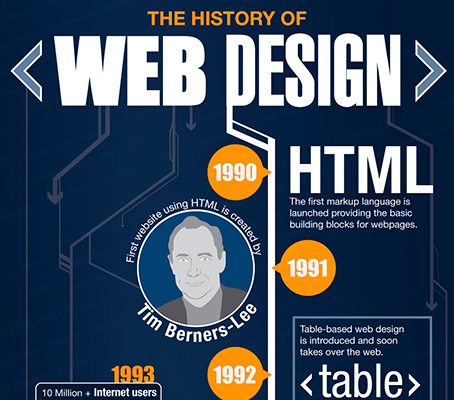Fascinated In Finding Out Exactly How Web Site Style Has Changed Throughout The Years? Discover The Trip
Fascinated In Finding Out Exactly How Web Site Style Has Changed Throughout The Years? Discover The Trip
Blog Article
Short Article Produced By-Rasmussen Dalby
In the past, internet sites were simple and focused on information. Navigating was straight, and design was for desktops. Currently, customer experience is vital. Data guides designs for easy navigation. Responsive designs match different devices. Today, dark mode lowers strain, and minimalist food selections boost navigating. Interactive functions involve customers, and vibrant visuals attract attention. AI assimilation increases involvement. See exactly how layout has advanced to improve your on-line journey.
Very Early Days of Website Design
In the early days of website design, simpleness preponderated. Sites were basic, with limited shades, font styles, and formats. The focus got on giving details rather than flashy visuals. Individuals accessed the internet with slow dial-up links, so rate and performance were essential.
Navigating menus were straightforward, generally situated on top or side of the web page. click the up coming webpage were designed for computer, as mobile surfing wasn't yet prevalent. Web content was king, and designers focused on easy readability over complicated layout aspects.
https://timesofindia.indiatimes.com/home/education/tips-and-tricks/7-tips-to-up-your-digital-marketing-game/articleshow/91786453.cms was the key coding language utilized, and developers needed to work within its restrictions. Animations and interactive features were very little compared to today's requirements. Sites were static, with little vibrant web content or tailored customer experiences.
Surge of User-Focused Layout
With the advancement of internet site design, a change towards user-focused style principles has actually become significantly prominent. Today, creating web sites that focus on user experience is critical for involving site visitors and attaining organization objectives. User-focused style entails understanding the demands, preferences, and actions of your target audience to tailor the website's layout, content, and includes as necessary.
Designers currently carry out thorough research, such as customer studies and usability testing, to collect insights and responses directly from customers. This data-driven approach helps in producing intuitive navigation, clear calls-to-action, and aesthetically attractive interfaces that resonate with visitors. By putting the individual at the facility of the design procedure, websites can provide a more tailored and pleasurable experience.
Responsive design has likewise emerged as a vital facet of user-focused design, guaranteeing that websites are optimized for different gadgets and display sizes. This versatility enhances availability and use, satisfying the diverse ways users connect with web sites today. Essentially, the rise of user-focused style indicates a change towards creating electronic experiences that focus on the requirements and expectations of completion customer.
Modern Trends in Web Design
Explore the most up to date trends forming web design today. One popular trend is dark mode design, supplying a streamlined and modern-day look while minimizing eye stress in low-light settings. One more key pattern is minimal navigation, simplifying menus and boosting individual experience by concentrating on essential elements. Integrating micro-interactions, such as computer animated buttons or scrolling results, can produce a much more appealing and interactive site. Receptive style continues to be essential, ensuring smooth user experiences across different tools. Furthermore, using vibrant typography and unbalanced layouts can add visual interest and draw attention to particular web content.
Incorporating AI technology, like chatbots for customer support or tailored suggestions, boosts user involvement and enhances procedures. Accessibility has additionally end up being a considerable trend, with designers prioritizing comprehensive design practices to cater to diverse customer demands. Welcoming sustainability by maximizing web site performance for speed and efficiency is an additional emerging trend in web design. Collaborating with user comments and data analytics to iterate and boost style continually is important for remaining relevant in the ever-evolving electronic landscape. By accepting these modern fads, you can develop a visually attractive, easy to use site that reverberates with your target market.
Final thought
As you reflect on the evolution of website layout from the very early days to currently, you can see how user-focused style has actually ended up being the driving force behind modern-day trends.
Accept the trip of adjustment and adjustment in web design, constantly maintaining the user experience at the forefront.
Remain current with the current patterns and innovations, and never quit developing your strategy to develop aesthetically sensational and straightforward web sites.
Evolve, adapt, and produce - the future of web design remains in your hands.
